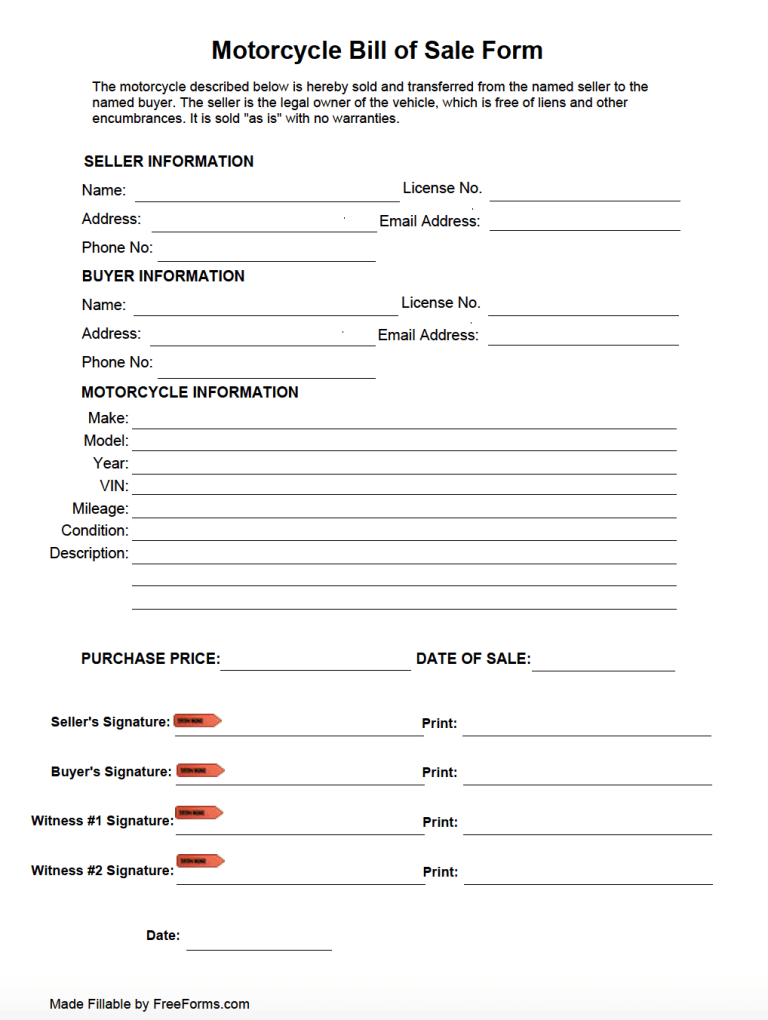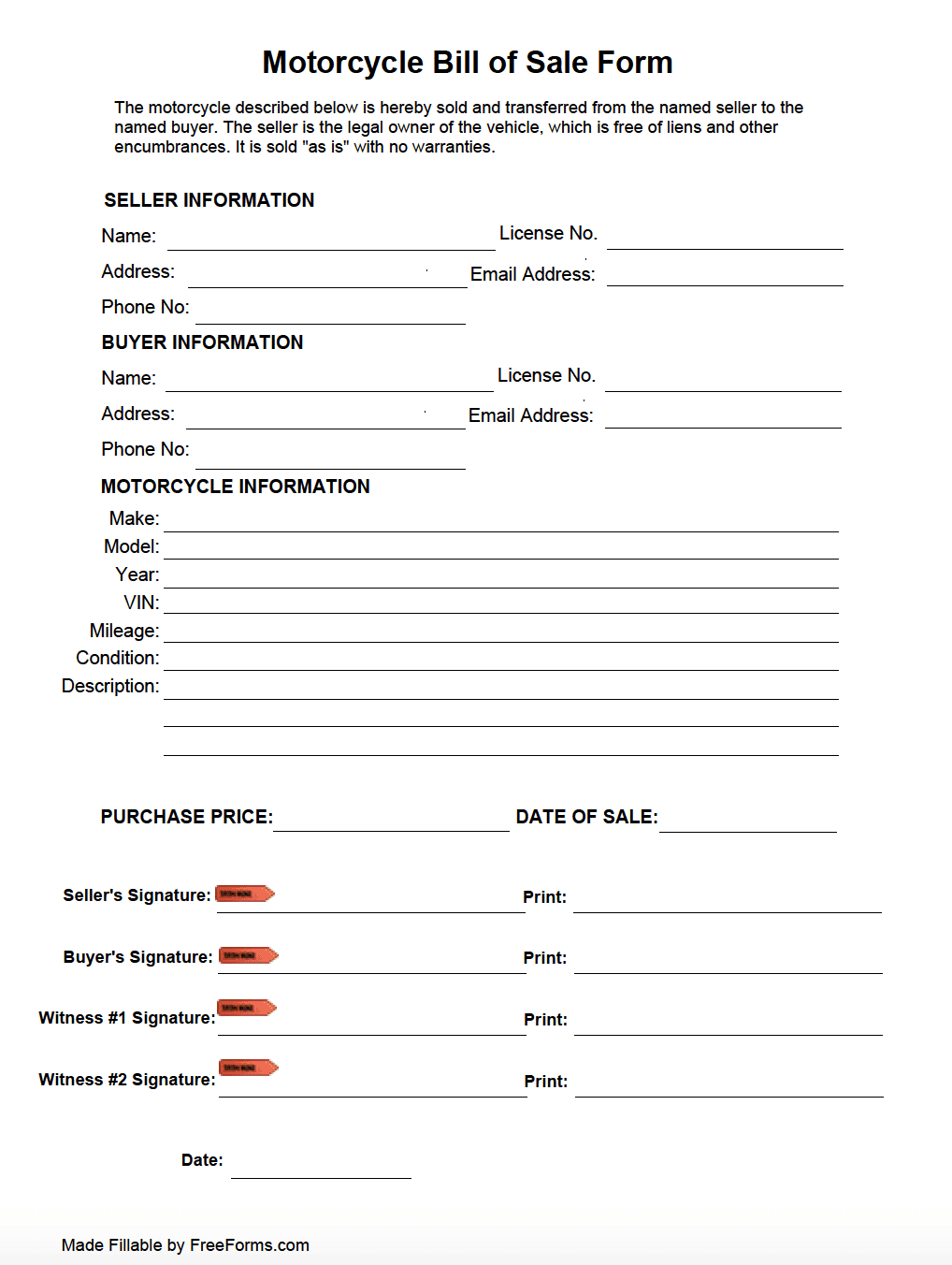Why Do I Need a Bill of Sale?
Proper documentation of the sale of your motorcycle is essential to proving ownership and producing evidence of a set purchase price for tax purposes. This proof of ownership will be useful when obtaining registration and transferring the vehicle’s title after it changes hands. The form can also support the seller after the sale has been finalized, should the motorcycle be abandoned or operated illegally before transfer.
How to Effectively Sell a Motorcycle
Step 1 – Thoroughly Clean the Motorcycle
Take the extra time to cleanse your bike from top to bottom. You can even take the bike apart to ensure a deep clean in hard-to-reach surfaces under plastics, in and around dials, spokes, and wiring components. Check the chain, engine, wheels, body, and seat for anything that must be replaced before photographing and showing the bike. Improve the overall look with some easy fixes, such as buffing out scuff marks or replacing footpads. You can take years off the appearance by merely polishing the chrome and tires and lubing the chain.
Step 2 – Inspect for Damage and Make Needed Repairs or Replacements
You will want to lay the groundwork to have the bike in the best possible working condition before you are ready to sell and maintain an edge when it comes time to negotiate. Check for any issues and catalog minor damage, such as small scratches, to include in your listing. Examine for engine element leaks or corrosion and make necessary repairs. Replace worn-out and broken parts at your expense, it may be worth it in the long run and will be easier to recoup when it comes time to sell than a bike sold in “as is” condition.
Step 3 – Determine a Plausible Sales Price
You can start at a leading evaluation resource site such as Kelley Blue Book, NadaGuides, or Cycle Trader to evaluate the vehicle’s suggested retail price. Next, explore the average sales price for the same or similar used motorcycles within your geographical territory in online and print classifieds or pick up a copy of Motorcycle Shopper Magazine. Doing so will give you a better idea of what buyers are willing to pay, which may be dependent on your location and the time of year you choose to sell. Once you have determined the bike is worth, consider what you will take for it and narrow down your prepared firm price. When listing, you may also want to add a few hundred dollars more to the price, as most buyers are looking for a deal when purchasing a motorcycle in used condition. If your bike has been equipped with aftermarket accessories, you may want to contemplate selling them separately. They generally do not add significant value to the vehicle but could gain an additional amount if sold individually.
Step 4 – Market the Sale Using Various Approaches
When it comes time to list the bike, create a thorough description. Include the year, make, model, mileage, last maintenance date, accessories, and any associated issues or damage. Take at least ten photos to present different perspectives of the vehicle. Try to get pictures that display a good quality of light in sharp focus and incorporate close-ups of instrument panels and engine components. There is an array of online classifieds that promote the sale, including Craigslist, eBay, Cycle Trader, and Facebook Marketplace, to name a few. If you also choose to market in print, check the classifieds in newspapers, circulars, or classified-specific magazines. Take advantage of this option if your local community presents opportunities to post flyers on bulletin boards at part shops and motorcycle hangouts. You may also elect to use a consignment service such as RumbleOn or approach an area dealer to inquire if they would offer such a service for your needs.
Step 5 – Finalize the Sale of the Bike
When responding to interested parties, suggest meeting publicly to showcase the motorcycle. A bank, shopping area, or, ideally, a dealership are all decent places to facilitate the sale. If the vehicle is actively under financing, the optimal location to finalize would be at the financial institution in which the loan was initiated. If the bike is owned outright, the buyer’s bank is an excellent choice to avoid carrying large amounts of cash for either party. If a potential buyer requests a test ride, always ask for collateral identification and perhaps the cash amount of the asking price. Remember that you do not have to grant one; an optional alternative could be to have it inspected by a mechanical specialist. When it comes to test-riding a motorcycle, a higher level of risk is presented than a car or truck, especially if you are not selling to an experienced rider. If you allow one, always check their licensing credentials and insist they wear helmets. After an agreement on the purchase price, you can complete the bill of sale, exchange the payment, and take the plates and registration. Be prepared to present the new owner with the keys, title (signed over), owner’s manual, and vehicle history documentation to complete the transaction.




Comments